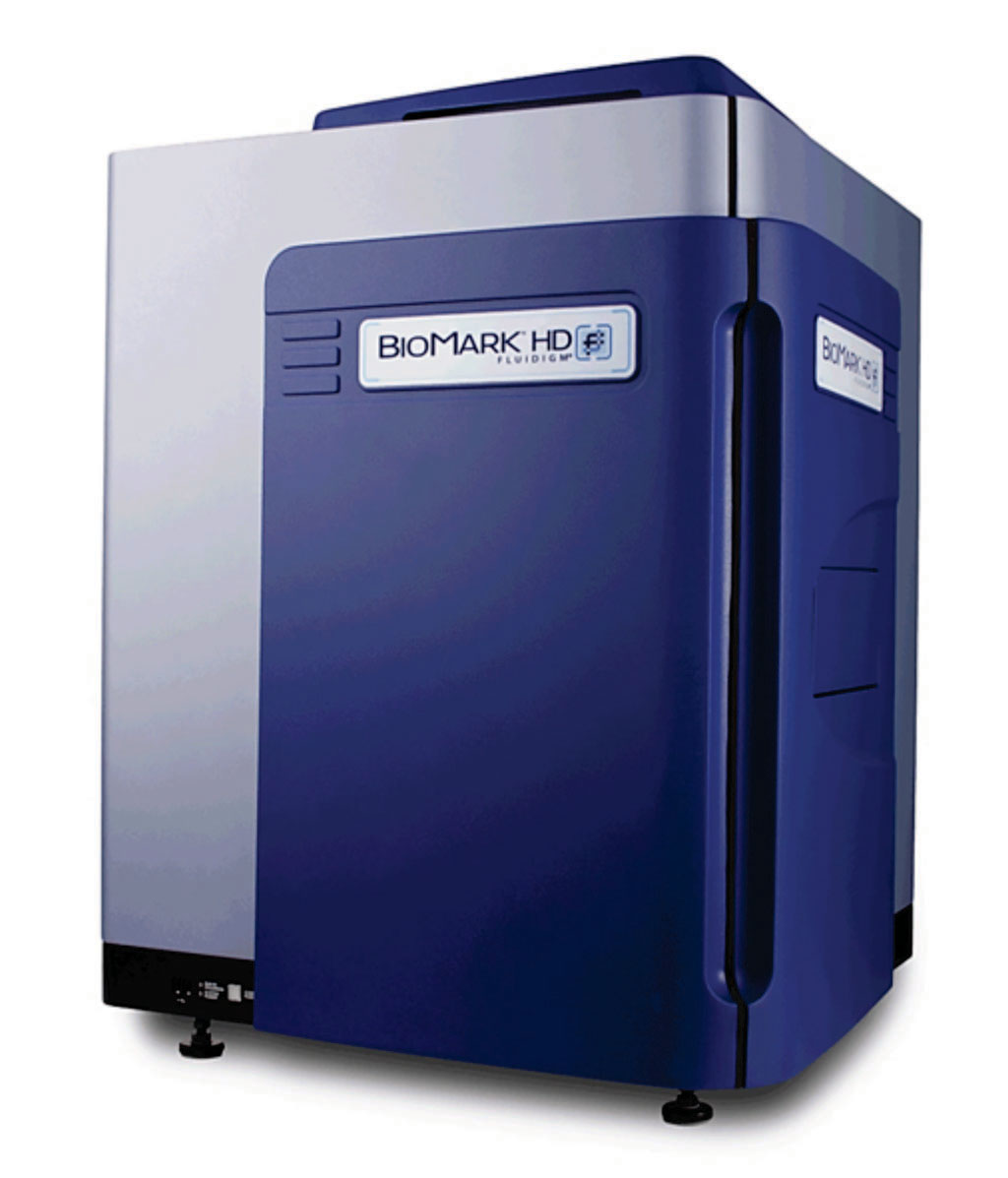DNA Levels in Blood Correlated with Ovarian Cancer Outcomes
By LabMedica International staff writers
Posted on 04 Jan 2017
The development of blood biomarkers that can be used for early detection of cancer or to measure tumor burden and response to treatment is a major goal of translational cancer studies across all cancer types.Posted on 04 Jan 2017
Both tumor-derived proteins and DNA can be detected in circulating plasma and serum from cancer patients. Levels of circulating tumor DNA (ctDNA) detected in a blood test can be correlated with the size of ovarian cancers and can predict a patient's response to treatment or time to disease progression.

Image: The Biomark microfluidic system for polymerase chain reactions (Photo courtesy of Fluidigm).
Scientists at the Cancer Research UK Cambridge Institute (Cambridge, UK) measured levels of ctDNA carrying mutations in the tumor protein 53 gene (TP53), which are detected in 99% of patients with high-grade serous ovarian cancer (HGSOC). They analyzed 318 blood samples from 40 HGSOC patients, taken before, during, and after standard-of-care treatment were analyzed. Computerized tomography (CT) images of the patients' tumors were collected, as well as data on the progression of their cancers.
In order to quantify ctDNA levels, patient-specific TP53 TaqMan assays were designed to target mutations identified in formalin-fixed paraffin-embedded (FFPE) tissue. Digital PCR using the Biomark microfluidic system (Fluidigm, South San Francisco, CA, USA) was used to measure ctDNA levels in cell-free DNA from plasma samples collected during courses of chemotherapy. Serum CA-125 level was routinely monitored using a two-site sandwich immunoassay on a Siemens Centaur XP auto-analyzer.
The team found the fraction of mutated TP53 in ctDNA (TP53MAF) was correlated with volume of disease as measured by CT scan and unlike CA-125 pre-treatment TP53MAF levels were also correlated with each patient's time to progression. While CA-125 took 84 days to reflect the full extent of changes after chemotherapy, changes were reflected in TP53MAF in a median of just 37 days. In patients being treated for a relapse, a decrease in TP53MAF of more than 60% was associated with a longer time to progression, while a decrease of 60% or less was associated with poor response to chemotherapy and a time to progression of less than six months.
The authors concluded that their findings have strong potential for clinical utility owing to the ease of assaying DNA in plasma and the low cost and speed of ctDNA testing. Having very early information on response would empower patients and physicians to test alternative treatment options and have high utility in trials that link biomarkers to targeted therapy. The study was published on December 20, 2016, in the journal Public Library of Science Medicine.
Related Links:
Cancer Research UK Cambridge
Fluidigm







 assay.jpg)






